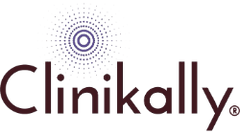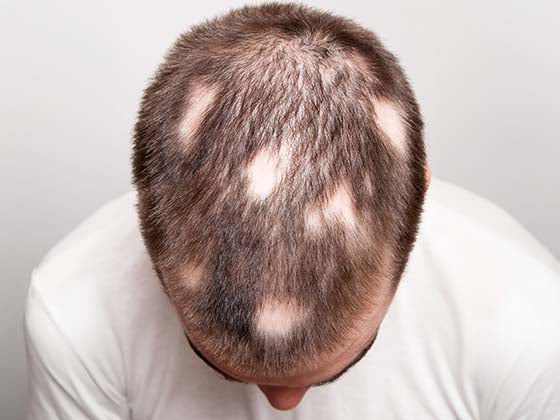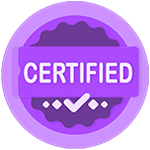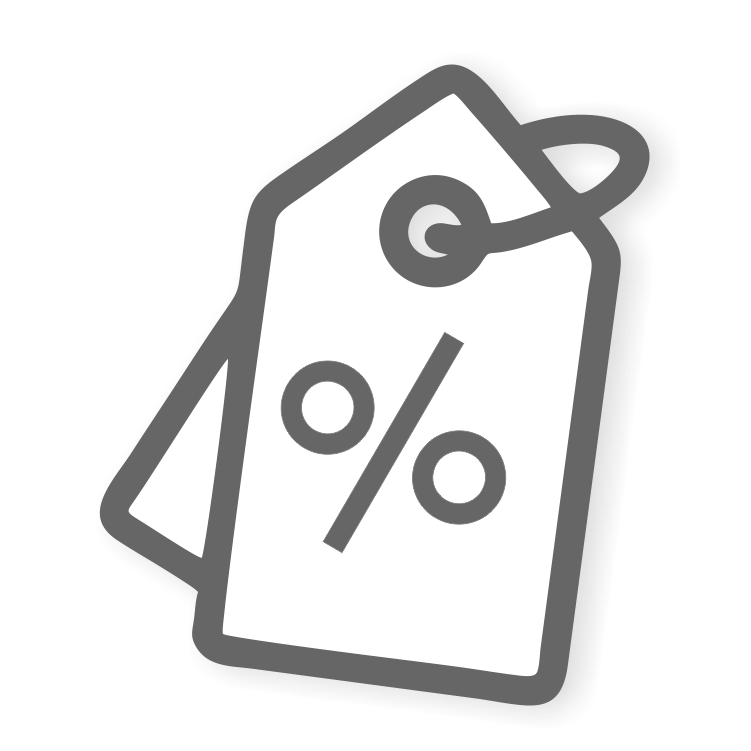Protein treatments are a great way to restore strength, elasticity, and health to your hair, especially if it’s been damaged by heat styling, chemical treatments, or environmental factors. This blog is a guide to five protein treatments that can transform your hair.
Why Does Your Hair Need Protein?

Your hair needs protein because it’s primarily made up of a protein called keratin, which provides strength, structure, and elasticity to each strand. Here's a deeper look into why protein is so essential for healthy hair:
-
Hair structure and strength: Hair is made up of 95% keratin, a fibrous protein that helps to give hair its structure and strength. If your hair lacks protein, it can become weak, fragile, and prone to breakage. Protein helps maintain the strength of the hair, preventing it from becoming limp and fragile.
-
Repairs and restores damage: When your hair is damaged—whether from heat styling, chemical treatments, or environmental factors—it can lose its natural protein structure. This makes the hair weaker, leading to split ends, breakage, and a dull appearance. Protein treatments help to restore and repair the hair, filling in gaps in the hair shaft, smoothing cuticles, and improving overall resilience.
-
Elasticity: Protein helps give your hair elasticity, which is the ability to stretch and return to its original shape. Without enough protein, your hair might become more brittle and less flexible. This means it’s more likely to snap or break when you brush, comb, or style it. Protein helps keep the hair stretchy, reducing breakage.
-
Prevents hair thinning: Protein is essential for the health of hair follicles. Without enough protein, hair follicles can become weaker and less capable of supporting healthy hair growth, leading to thinning hair or even hair loss. Protein helps to nourish the hair from the root, encouraging stronger, healthier hair growth.
-
Adds shine and smoothness: When hair needs protein, it can appear dull and rough because the cuticle is damaged. Adding protein helps to smooth and seal the cuticle, giving hair a shinier, more polished appearance. Protein treatments can improve the texture of your hair, making it feel softer and smoother.
-
Protects hair from external damage: Protein also plays a role in protecting hair from environmental damage, including UV rays, pollution, and harsh weather. It strengthens the hair shaft, making it less susceptible to breakage caused by these external factors. By reinforcing the hair’s natural structure, protein helps prevent further damage.
-
Maintains hair growth cycle: The health of your hair follicles is directly tied to the amount of protein in your diet and hair care routine. Protein helps regulate the hair growth cycle by supporting the anagen phase and promoting stronger, more durable hair strands. Without enough protein, the hair growth process can be disrupted, leading to slower growth or hair thinning.
The Role of Protein in Hair Structure and Health

Protein is essential for maintaining the structure and quality of your hair. Because hair is mostly made up of a protein called keratin, understanding its role in maintaining hair integrity is critical to keeping it strong, healthy, and attractive. Here is a breakdown of how protein affects your hair.
-
Keratin: It is a fibrous structural protein that comprises approximately 95% of your hair. It is robust, long-lasting, and contributes to the shape, structure, and durability of hair. Without adequate keratin, your hair would be fragile and brittle, easy to break or split.
-
Protein as structural support: Hair development begins in the follicle, where keratin is generated. The follicles generate new keratin cells, which are pushed up and out of the scalp, hardening as they rise to form the hair strand.
-
Hair growth and follicle health: Hair follicles produce new hair and require adequate protein intake to function effectively. Protein is essential for the anagen (growth) phase of the hair cycle. Without enough protein, hair follicles may weaken, resulting in thinning or delayed hair growth.
-
Repair and protection from damage: Hair is continually damaged by external factors such as heat style, environmental pollutants, and chemical treatments like coloring or perming. Protein serves as a healing process for damaged hair.
-
Moisture retention and protein balance: Although protein is necessary for hair health, it is critical to achieve a balance between protein and moisture. Overloading the hair with protein can cause stiffness, dry scalp and hair, and loss of elasticity. This is because protein treatments can remove moisture from the hair, resulting in a brittle texture.
-
Repairing split ends and breakage: Split ends and breaking are classic indicators of protein insufficiency. Hair's protein structure weakens as a result of damage, making it more susceptible to splitting and breaking. Using protein treatments strengthens hair from within, preventing split ends and breakage.
Signs of Protein Deficiency in Hair

Hair protein deficiency can cause a variety of problems, including weakened strength, texture, and poor overall health. Hair is mostly composed of protein (keratin), hence a shortage of protein might affect its structure and function. The most typical symptoms of protein shortage in hair are brittle and dry hair, excessive hair breakage, weak or limp hair, split ends, frizz and unruly texture, slow or thinning hair, loss of luster, chewy or stretched hair, loss of elasticity, fraying or roughness at the ends.
Protein vs. Moisture: Finding the Right Balance

Both protein and moisture are required for healthy, strong, and lustrous hair. The key is balance—too much of one or the other can lead to problems. Regularly examine the condition of your hair, apply protein and hydration treatments as needed, and adapt based on your hair's requirements. When you reach the perfect mix, your hair will become stronger, more resilient, and healthier overall.
Top 5 Protein Treatments for Healthier Hair

Protein treatments are a wonderful way to rebuild strength, minimize breakage, and enhance overall hair health. Each of the treatments described above addresses a distinct hair concern, from chemically damaged hair to dry, brittle strands, allowing you to pick the one that best meets your hair's requirements. Incorporate these treatments into your routine, and your hair will thank you for the extra attention and care!
Keratin Treatments for Smoother, Stronger Hair

A keratin treatment is a salon process that involves applying a particular formula enriched with keratin to the hair. This treatment smoothes frizz, seals the cuticle, and strengthens the hair. It works by covering the hair with keratin, which fills in structural gaps created by damage. The treatment is then sealed in with heat from a flat iron, which ties the keratin to the hair shaft, leaving the hair smoother, shinier, and easier to manage. How Keratin Treatments Work
-
Application: The keratin formula is applied to the hair section by section.
-
Absorption: The product is applied for about 20-30 minutes to allow the keratin to penetrate and coat each strand.
-
Heat Activation: A flat iron is used to seal the keratin into the hair cuticle, ensuring that it remains in place for long-term results.
-
Rinse and Style: After the treatment has been set, rinse the hair and style it as desired.
Keratin treatments typically produce visible results right away. Your hair will appear shinier, straighter, and healthier, with a significant reduction in frizz.
DIY Protein Hair Masks for Home Care

Here are a few simple yet effective protein hair mask recipes you can try with natural ingredients you probably already have in the kitchen:
-
Egg and olive oil protein: The ingredients include one egg (a protein source) and two tablespoons olive oil (moisturizing and nourishing). In a mixing basin, beat the egg until smooth. Mix in the olive oil and stir until smooth. Apply the mixture to damp hair, focusing on the ends and places that have been damaged the most. Protect your hair with a shower hat or plastic wrap. Leave the mask on for 20-30 minutes, then rinse with cool water and shampoo normally.
-
Avocado and honey protein mask: The ingredients are one ripe avocado (high in vitamins, proteins, and healthy fats), two tablespoons honey (natural moisturizer), and one tablespoon olive oil (optional for added moisture). In a mixing basin, mash the avocado until completely smooth. Add the honey and blend thoroughly. (Optional) Add olive oil for added nutrition. Apply the mask to damp hair, concentrating on the ends and any dry spots. After 20-30 minutes, rinse well with cool water and shampoo.
-
Yogurt and banana protein mask: The ingredients include one ripe banana (moisturizing and strengthening) and two tablespoons of plain yogurt (protein-rich and hydrating). Mash the banana in a mixing basin until smooth. Mix in the yogurt until it's creamy. Apply the mask to damp hair, beginning with the roots and working your way to the ends. Leave it on for 20 minutes. Rinse well with cool water, then shampoo and condition as usual.
-
Coconut milk and honey protein mask: Ingredients are 1/4 cup coconut milk (rich in proteins and healthy fats) and 2 tablespoons honey (moisturizing and repairing). Mix coconut milk and honey in a bowl until well combined. Apply the mask to damp hair, ensuring it is evenly distributed. Cover your hair with a shower cap or towel and let it sit for 20-30 minutes. Rinse thoroughly with cool water and follow up with your regular shampoo.
-
Mayonnaise and olive oil protein mask: Ingredients are 1/2 cup mayonnaise (contains egg protein, oils, and vinegar) and 2 tablespoons olive oil (moisturizing). In a bowl, mix the mayonnaise with the olive oil. Apply the mixture to damp hair, focusing on the ends and damaged areas. Cover with a shower cap or plastic wrap and leave it on for 30 minutes. Rinse with cool water and shampoo as usual.
-
Protein-packed aloe vera and castor oil mask: Ingredients are 2 tablespoons aloe vera gel (nourishing and soothing) and 1 tablespoon castor oil (promotes thicker, stronger hair). Mix the aloe vera gel and castor oil in a bowl. Apply the mixture to the scalp and hair, massaging gently for a few minutes. Leave it on for 20-30 minutes, then rinse with cool water. Shampoo and condition as usual.
Hydrolyzed Protein for Deep Repair

-
Penetrates deeply: Due to its smaller molecular structure, hydrolyzed protein can easily penetrate the hair shaft, reaching deep inside to help rebuild and strengthen damaged areas. This is especially beneficial for hair that has been weakened by heat, chemical treatments, or environmental factors.
-
Repairs damaged hair: Hydrolyzed proteins help rebuild hair bonds, particularly the disulfide bonds in keratin, which are often broken during chemical processes like coloring, perming, or bleaching. By repairing these bonds, hair becomes stronger and more resilient to future damage.
-
Improves hair elasticity: Damaged hair loses its natural flexibility, making it more prone to breaking. Hydrolyzed proteins restore elasticity by strengthening the hair structure, making it more flexible and less likely to crack under tension.
-
Adds moisture and softness: Hydrolyzed proteins can also help your hair retain moisture, making it softer, smoother, and easier to manage. This is especially beneficial for dry or brittle hair because it restores the hair's natural moisture balance.
-
Reduces frizz: Hydrolyzed proteins help to smooth the hair cuticle by strengthening it and adding moisture, decreasing frizz and making your hair look shinier and healthier.
-
Prevents future damage: Regular usage of hydrolyzed protein strengthens hair over time, reducing future damage from style, UV exposure, and environmental factors. It forms a protective barrier, shielding hair from external aggressors.
How to Choose the Right Protein Treatment for Your Hair Type

Choosing the right protein treatment for your hair type is key to achieving optimal hair health and avoiding over-proteinization, which can lead to dry, brittle hair. The right treatment will help repair damage, boost strength, and restore your hair's natural elasticity. Here's a breakdown of how to pick the best protein treatment based on your unique hair needs:
-
Fine or Thin Hair: Fine hair tends to be more delicate, and overuse of protein can weigh it down. Protein treatments for fine hair should be lightweight and not too heavy, as you don’t want them to leave your hair feeling stiff or flat.
-
Curly or Wavy Hair: Curly hair often requires extra care and protein due to its texture and tendency to be dry or prone to breakage. However, too much protein can cause the hair to feel stiff and lack movement. Protein treatments for curly hair should strike a balance between strengthening and moisturizing.
-
Dry or Damaged Hair: Dry or damaged hair needs intense repair. It’s often fragile and prone to breakage, so a protein treatment is essential to restore strength, shine, and elasticity. However, the treatment should also provide deep hydration to counteract the dryness.
-
Chemically Treated or Color-Treated Hair: Chemically treated hair, especially colored or bleached hair, can become dry and fragile due to the harsh chemicals involved in the processing. For this type of hair, protein is crucial for repairing the cuticle and restoring strength. However, these treatments should also be formulated to prevent additional dryness and damage.
-
Thick or Coarse Hair: Thick or coarse hair often benefits from protein treatments that offer intense strength and moisture. These treatments help manage frizz, improve elasticity, and smooth the hair shaft. While protein is necessary for these hair types, the treatment should also provide ample hydration to prevent hair from feeling dry or stiff.
-
Oily Hair: Oily hair can be tricky, as protein treatments can potentially add more weight and make the hair feel greasy. For oily scalp and hair, you should choose lighter protein treatments that won’t weigh hair down or contribute to excess oil buildup.
Protein Treatments for Curly and Coily Hair

Some of the best protein treatments you can use for curly and coily hair, helping to strengthen, define, and protect curls:
-
Protein-infused deep conditioning masks: Deep conditioning masks with protein offer intensive healing and moisture restoration. These treatments are ideal for curly and coily hair that is susceptible to dryness and breakage. Formulas based on keratin or collagen can help strengthen hair. Shea butter, avocado oil, and argan oil are examples of ingredients that help to keep hair moisturized and prevent it from feeling stiff. Apply to damp hair after a shampoo. Leave on for 20-30 minutes (or longer for added nutrients). Rinse thoroughly and finish with a hydrating conditioner.
-
Protein-rich leave-in conditioners: Protein-rich leave-in conditioners are ideal for keeping your hair healthy all day. They promote continual restoration and keep your curls hydrated while also protecting them from environmental assaults. These provide strength and flexibility without making the hair rigid. Lightweight formulations that do not weigh down curls. Apply to damp hair after shampooing and conditioning. Distribute evenly and style as normal. Use daily or as needed to stay strong and hydrated.
-
Protein-infused curl creams: Curl creams with added protein can help enhance and define curls while strengthening the hair. These creams are usually a 2-in-1: they offer styling hold while treating hair with much-needed protein. Keratin or collagen to strengthen and improve elasticity. Glycerin or aloe vera to provide moisture and reduce frizz. Apply to damp hair in sections. Scrunch or twist curls for better definition. Allow hair to air dry or diffuse.
-
Protein and moisture balancing masks: Balancing treatments that combine protein with moisturizing ingredients are essential for curly and coily hair. These masks strengthen while maintaining softness and manageability. Proteins like soy or hydrolyzed wheat mixed with oils such as coconut oil, jojoba oil, or shea butter. A combination of protein and hydration helps prevent over-proteinization. Use once a week to help restore and maintain the balance between protein and moisture. Apply to clean, damp hair and leave for 15-30 minutes before rinsing.
-
Protein treatments for scalp health: A healthy scalp is the foundation for healthy curls. Using protein-based scalp treatments can encourage hair growth and fortify hair follicles. Amino acids or proteins like keratin that repair hair at the follicle level. Moisturizing ingredients like tea tree oil to soothe the scalp. Apply directly to the scalp, massaging it gently for a few minutes. Leave it on for a few minutes, then rinse thoroughly. Can be used before a shampoo to cleanse and nourish.
Best Options for Fine or Straight Hair

Some of the best alternatives for fine or straight hair are:
-
Hydrolyzed silk protein: Hydrolyzed silk protein is a lightweight protein that strengthens fine hair without adding weight. It adds smoothness, shine, and contributes to a delicate yet firm texture. Provides strength and flexibility to hair without weighing it down. Provides gloss and smoothness, enhancing the natural texture. Ideal for fine hair requiring protection and moisture balance.
-
Hydrolyzed wheat protein: Hydrolyzed wheat protein is another great choice for fine hair. It's lightweight and can help strengthen strands, giving them volume and tenderness without seeming heavy. Strengthens the hair without making it rigid. Increases volume and body without dragging hair down. Helps to retain moisture, which is vital for fine, dry hair.
-
Keratin-based treatments: Keratin is a strong protein that offers structure to fine or straight hair. While some keratin treatments might be heavy, there are lighter solutions that can strengthen fine strands without leaving hair stiff or oily. Restores and strengthens the hair cuticle. Smooths and shines, enhancing manageability. Helps to decrease frizz and flyaways.
-
Rice protein: Rice protein is a delicate but effective protein that strengthens without overburdening fine hair. It's also a great solution for damaged hair because it restores elasticity and strengthens the hair without being too harsh. Increases volume and strength. Lightweight and non-greasy. Helps to protect from heat styling damage.
-
Collagen-infused products: Collagen proteins are larger than other proteins, so they tend to sit on the hair's surface, giving tiny strands of body and thickness without entering too deeply. Collagen strengthens hair and enhances its suppleness. Provides body and volume to fine hair. Promotes healthy hair growth and strength. Enhances suppleness and avoids breaking.
-
Light protein leave-in conditioners: Leave-in conditioners with protein are a fantastic choice for fine hair since they provide strength and hydration throughout the day without making hair feel heavy or greasy. Look for lightweight solutions that do not overload your hair with protein. Provides light protein for sustained strength. Assists with detangling and frizz control. Keeps hair moisturized while retaining volume.
-
Amino acid-infused products: Amino acids are the building blocks of proteins and are great for fine hair since they strengthen strands without adding too much weight. Amino acids aid in strengthening hair's natural structure and promote overall health. Helps to restore damage and prevent breakage. Strengthens the hair while keeping it silky. Lightweight and non-greasy, ideal for fine textures.
-
Volumizing protein treatments: Fine or straight hair lacks volume and may appear flat. Volumizing protein treatments mix protein with chemicals such as panthenol and silicone to increase volume, strength, and body. Adds bulk and thickness without becoming heavy. Strengthens hair while adding body and texture. Ideal for fine hair that needs more volume.
Caring for Color-Treated and Damaged Hair

Color-treated and damaged hair requires a combination of gentle washing, moisturizing, and strengthening treatments to restore and maintain its integrity. Incorporating products with nourishing elements such as keratin, silk proteins, and natural oils will help reduce damage, preserve color, and maintain hair health. Regular trimming, avoiding overwashing, and utilizing heat protection can all help to prevent further damage. A well-balanced routine will help you keep your hair looking vibrant and healthy while also preserving it from future damage.
Long-Term Tips for Maintaining Strong, Healthy Hair

Long-term hair health requires persistent, healthy practices that nourish your hair from the inside out. By implementing these ideas into your routine, you may keep your hair healthy, shining, and colorful for years to come. Whether it's eating a nutritious diet, protecting your hair from heat, or having regular trims, taking a proactive approach will keep your hair looking great and reduce the chance of long-term damage.
















